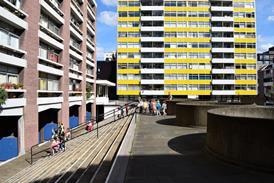- Home
- Intelligence for Architects
- Subscribe
- Jobs
- Events

2025 events calendar Explore now 
Keep up to date
Find out more
- Programmes
- CPD
- More from navigation items
Who is really advocating for architects?

Drawing on the Fawcett Society’s findings, Eleanor Jolliffe asks whether the profession’s culture and its lack of meaningful representation is failing not only women but architects more widely
While reading the Fawcett Society’s new report, commissioned by RIBA, “Build it together: Women’s experiences in architecture”, I found it alarming, and yet somehow unsurprising, how little had changed since the last RIBA report on women in architecture in 2015. Put aside the frankly shocking reports of sexual harassment, and many of the issues women face in the profession seem to point to poor workplace culture and lack of employment policies.
Whether this is simply a problem for women though, I am less certain. I think it is entirely possible that the Fawcett Society’s report has picked up on the structural problem of a profession dominated by tiny practices with a lack of support, fairly limited financial reward and a difficult market to operate in. Hien Nguyen reflected on this recently in her BD column, noting that architecture in the UK is now “increasingly defined by diminishing fees, increased costs, more liability, rising risk and a growing disconnect between architects and the institutions that represent them”.
…
This content is available to registered users | Already registered?Login here
You are not currently logged in.
To continue reading this story, sign up for free guest access
Existing Subscriber? LOGIN
REGISTER for free access on selected stories and sign up for email alerts. You get:
- Up to the minute architecture news from around the UK
- Breaking, daily and weekly e-newsletters
Subscribe to Building Design and you will benefit from:

- Unlimited news
- Reviews of the latest buildings from all corners of the world
- Technical studies
- Full access to all our online archives
- PLUS you will receive a digital copy of WA100 worth over £45
Subscribe now for unlimited access.






